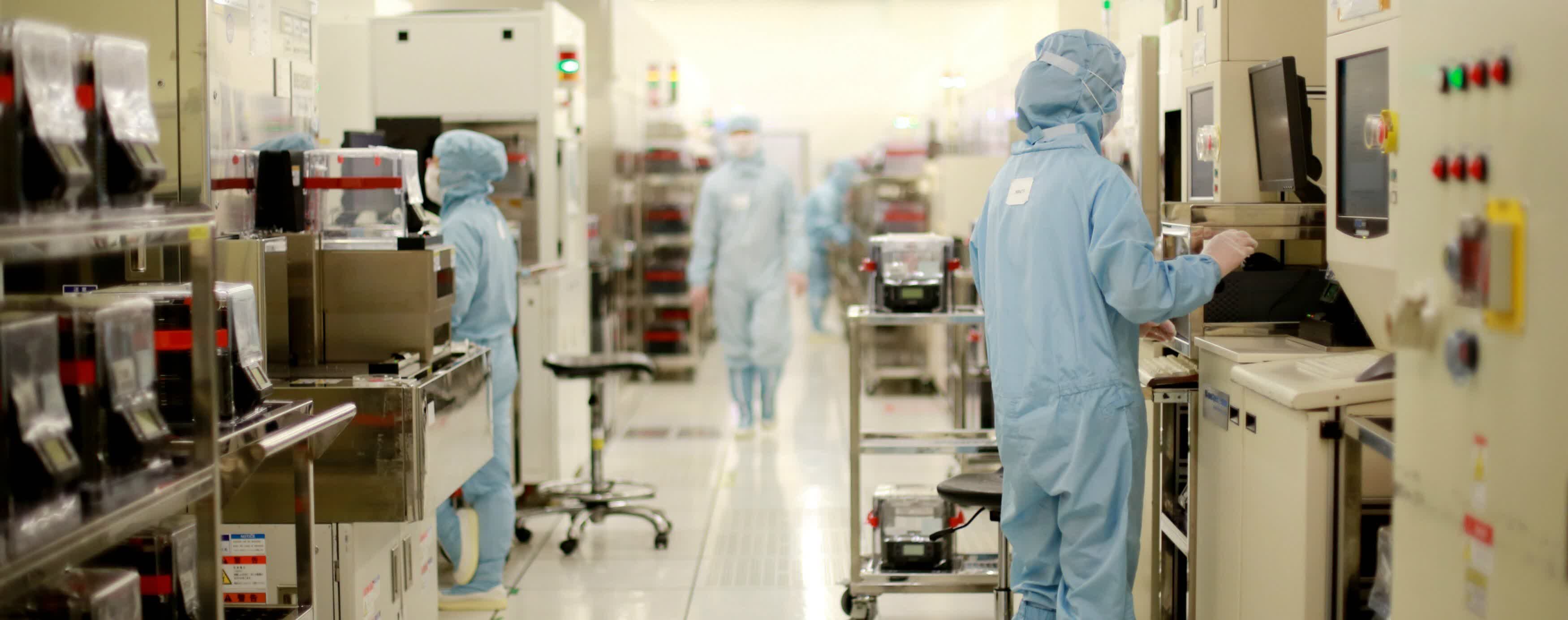China's SMIC pours $8.87 billion into building a new chip plant in Shanghai
The big film: SMIC is ane of several chipmakers that are part of Cathay's plan to get more self-reliant and create a world-class semiconductor industry. The company aims to i solar day compete with the likes of Samsung and TSMC, only in the meantime it'south charily building manufacturing capacity for mature procedure technologies that are used in a diversity of applications.
China'southward largest foundry today announced it will build a new flake mill in Shanghai equally part of an aggressive project to expand chapters and challenge the likes of Samsung, Taiwan Semiconductor Manufacturing Co. (TSMC), and GlobalFoundries.
To that end, SMIC says it will commit no less than $8.87 billion to the projection, and has already signed an agreement with a Shanghai regime-backed entity to build the new facility in the city's free-trade zone. More than half of the funding comes from SMIC itself, and around 25 percent comes from the Lin-Gang Special Area Administration.

When fully operational, the new manufacturing plant will have a chapters of up to 100,000 wafer starts per month. The plan is to make chips using 28 nm and older process nodes, as SMIC has yet to chief sub-14 nm process technology, and the Chinese government has not yet been able to secure advanced EUV equipment from ASML.
The larger process nodes are based on more mature engineering science that is adequate for the production of wireless chipsets, microcontrollers, image sensors, and display driver chips. As we've seen over the past 12 months, a shortage of components like the humble $i display drivers can have a significant impact on the price and availability of everything with a screen.
SMIC, who owns several scrap manufacturing plants in Beijing, Tianjin, and Shenzhen, is also working on more avant-garde 14nm FinFET and 12nm process nodes, merely progress on volume manufacturing and so far has been slow and contracts are few and far between. Back in June, the Chinese company said it was confident that yield issues could be overcome past the second half of 2022.
China is content with using aging chips while its semiconductor industry catches upward, and has already bought every final used slice of scrap manufacturing equipment from Japan. SMIC'southward latest move may help the country become more cocky-reliant, especially since at that place's some other trade war brewing between it and the US.
Source: https://www.techspot.com/news/91098-china-smic-pours-887-billion-building-new-chip.html
Posted by: shryockoffirtansay1992.blogspot.com


0 Response to "China's SMIC pours $8.87 billion into building a new chip plant in Shanghai"
Post a Comment